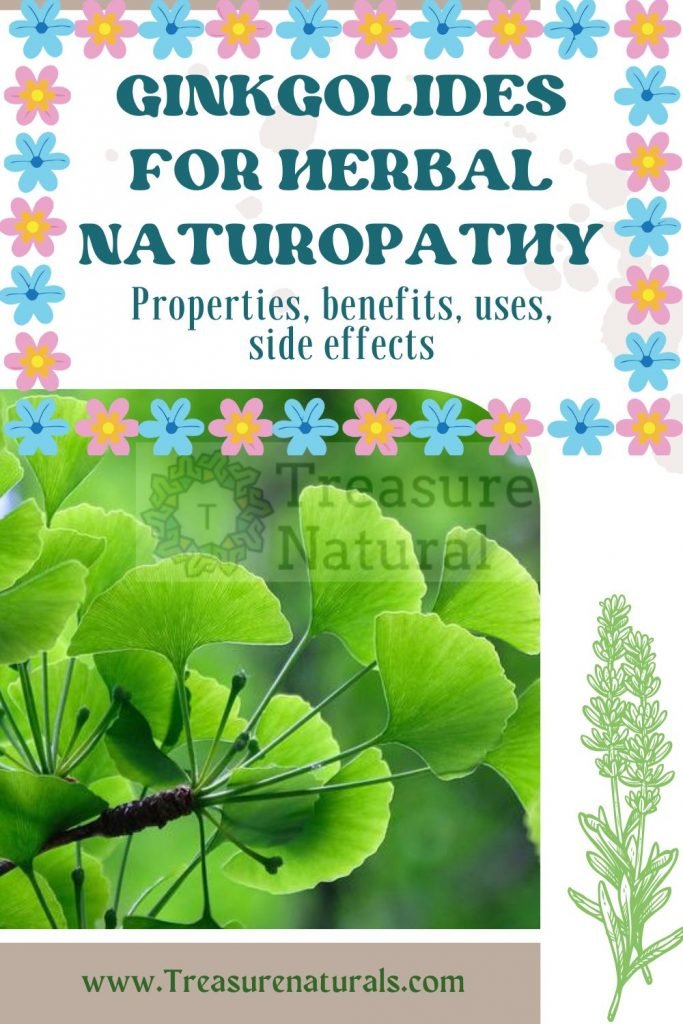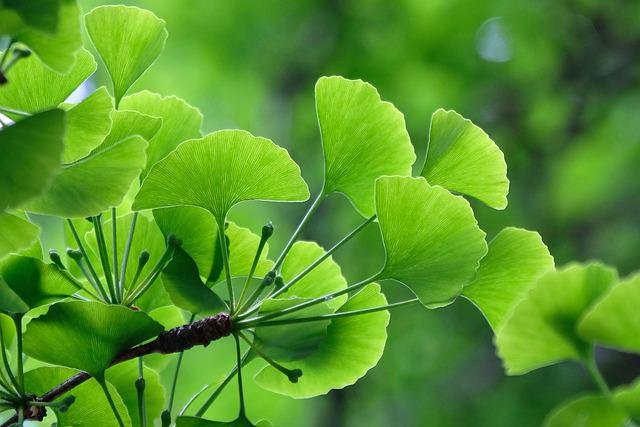
Ginkgolides are terpene lactones that are found in the extracts of Ginkgo biloba L. The therapeutic properties of these substances are remarkable and mainly attributable to the protective activity of blood vessels and regulator of blood flow. Let’s find out better.
Where are ginkgolides found
Ginkgo biloba L. is a plant that has been known in traditional Chinese medicine for millennia. Considered a living fossil, or the only surviving species of the Ginkgoaceae family, it is a deciduous tree up to 40 m tall, with leaves arranged in verticils in groups of 3-5, veined and with a characteristic fan shape, up to 12 cm long. , with a notch at the apex that forms two distinct lobes, hence the specific name “bilobed”.
The lobes of the leaves are separated even if inextricably linked to the base, this would symbolize the Yin and Yang principle, the masculine and the feminine, according to which reality is regulated by opposites that overlap and synergize.
The flowers are dioecious, with the male flowers placed in pendulous catkins with numerous isolated anthers in pairs pedunculated on a slender axis; the females are in pairs on a long footed axis.
The so-called fruits are drupes with a stinking smell and protect a seed appreciated in the kitchen once toasted.
Properties of ginkgolides
The main properties of ginkgo are attributable to ginkgolides, the potent and selective inhibitors of PAF (Platelet Activating Factor), the platelet aggregating factor. PAF is an inflammatory substance involved in various inflammatory, cardiovascular and respiratory disorders. Ginkgolide B acts selectively by inhibiting PAF-induced platelet aggregation.
Furthermore, ginkgolides show protective activity on the vascular endothelium, antioxidant, regulator of blood flow, vasoactive on peripheral and cerebral blood circulation, antiplatelet and antiallergic.
Numerous clinical studies have demonstrated the positive effect of ginkgo extracts in increasing vasodilation and peripheral blood flow in capillaries and arteries in various circulatory disorders; in Reynaud’s disease; in venous insufficiency of the lower limbs; in post thrombotic syndromes; in peripheral vascular disorders (vertigo, ear ringing, vestibular disorders) and central (memory and attention deficit); bronchial asthma on an allergic basis.
Some studies show that ginkgo can stabilize or improve cognitive performance in patients with Alzheimer’s disease or multi-infarct dementia.
Ginkgo has an anti-allergic and anti-asthmatic action attributable both to the direct activity against the platelet aggregating factor and to a desensitizing action of mast cells and basophils (immune system response cells), attributable to the flavonoids present in the phytocomplex of the plant.
In addition, the gingko biloba supplement, thanks to its properties, protects the eyes and vision.
In traditional Chinese medicine, ginkgo has always been used in the treatment of asthma and other diseases of the respiratory system, as well as allergic manifestations of the skin.
Contraindications

There are no known side effects or contraindications attributable to the use of the plant especially for short periods and without associations with other pharmacological substances.
However, it must be borne in mind that the bases of toxicological studies on plants can be traced back to the observation of the interactions of ginkgo with some types of drugs.
Combination of ginkgo extracts and anticoagulant drugs, such as warfarin, for long periods, can cause bleeding, probably due to a combination of the effects of synthetic and vegetable drugs.
Therefore, a combination of ginkgo with drugs such as warfarin, aspirin, and other platelet aggregators is not recommended; high dosages bromelain, Vitamin E, high doses of omega 3 fatty acids, garlic, sweet clover, willow and spirea which with different actions can influence coagulation.






